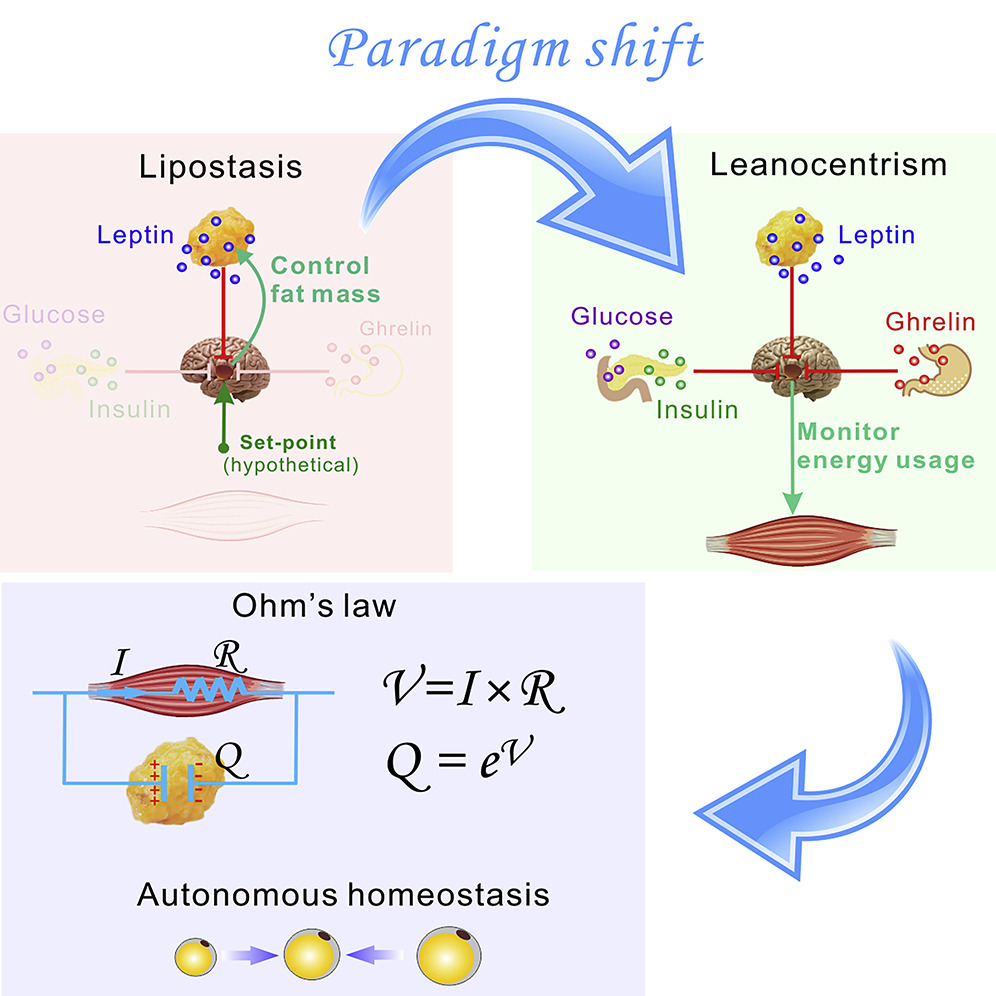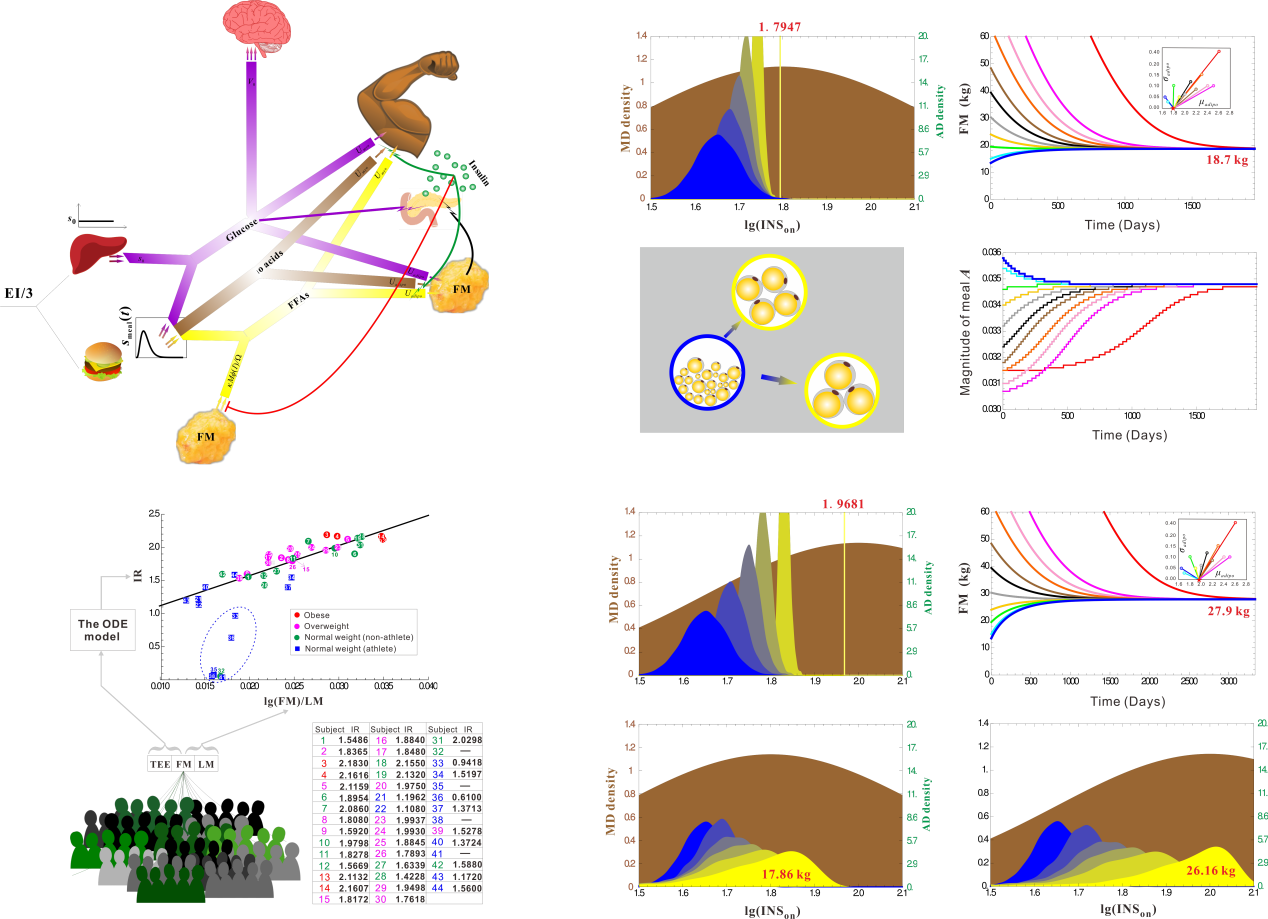Paradigm shift found on middle-age spread
2020-06-11
A centuries-old consensus on body weight regulation and middle-age spread may have just been broken by researchers at Dept. of Biology, Southern University of Science and Technology (SUSTech).
Associate Professor Guanyu Wang (Biology) has made a vital breakthrough in the way the body deals with energy and metabolism. Their theory, called “leanocentric locking-point theory on fat mass homeostasis,” was published in iScience, a multidisciplinary journal from the Cell Press series. Their paper was titled, “Body Mass Dynamics is Determined by the Metabolic Ohm’s Law and Adipocyte-Autonomous Fat Mass Homeostasis.”
 Fig. 1. The paper pointed out the problems of the lipostasis theory, establishing a new theory called leanocentrism, which is regarded as an original, paradigm-shift achievement.
Fig. 1. The paper pointed out the problems of the lipostasis theory, establishing a new theory called leanocentrism, which is regarded as an original, paradigm-shift achievement.
For a long time, it was believed that body fat was tightly regulated by the brain, following over one hundred years of research and literature. Professor Guanyu Wang used mathematical modeling and big data computational analysis to find that weight stability is independent of the brain. It is a consequence of peripheral metabolic tissues.
First, the quantity of fat mass is primarily determined by the degree of peripheral insulin resistance, and it is unnecessary to assume a set-point in the hypothalamus. Secondly, fat homeostasis starts with the self-management of the adipocytes (fat storage cells). For example, upon rapid weight reduction caused by underfeeding, the adipocytes become very small and very sensitive to insulin. Once regular feeding is re-instituted, the adipocytes preempt nutrient intake, and the weight rebounds as a consequence. The whole process is independently realized in the periphery and needs no intervention by the central nervous system. It also explains why crash diets do not work for people.
 Fig.2 Mathematical modeling and big-data computational analyses on the complex body metabolism system.
Fig.2 Mathematical modeling and big-data computational analyses on the complex body metabolism system.
The integration of a large amount of clinical data with the energy balance principle allowed the author to derive an equation called the metabolic Ohm’s law. The lean and fat tissues are similar to parallelly connected resistors and capacitors, respectively. If the lean tissue’s daily energy expenditure is thought of as electric current, lean tissue can be considered as resistance through its insulin resistance. In contrast, fatty tissue absorbs unwanted calories as fat.
The metabolic Ohm’s law intuits the fundamentals behind the middle-age spread. As people age, lean tissues’ insulin resistance exacerbates, thereby resulting in more storage in the fatty tissues. Because this occurs under the same calories through the lean tissues, it follows that middle-age spread is a normal physiological process.
Against the backdrop of the current twin-epidemics of obesity and diabetes, these findings are scientifically significant and socially valuable. There have been long-lasting interests in finding the set-point in the hypothalamus, which serves as a drug target of obesity treatment. Instead, people need to control their body weight through improving their insulin sensitivity.
Guanyu Wang is the sole author, with SUSTech as the sole correspondent unit. The study was supported by the National Natural Science Foundation of China, Guangdong Key laboratory funds, and Shenzhen research funds. Mathematical modeling and computational analyses were carried out on the supercomputer Taiyi resided in the SUSTech Center for Computational Science and Engineering.
Link to the paper: https://www.cell.com/iscience/fulltext/S2589-0042(20)30361-8




